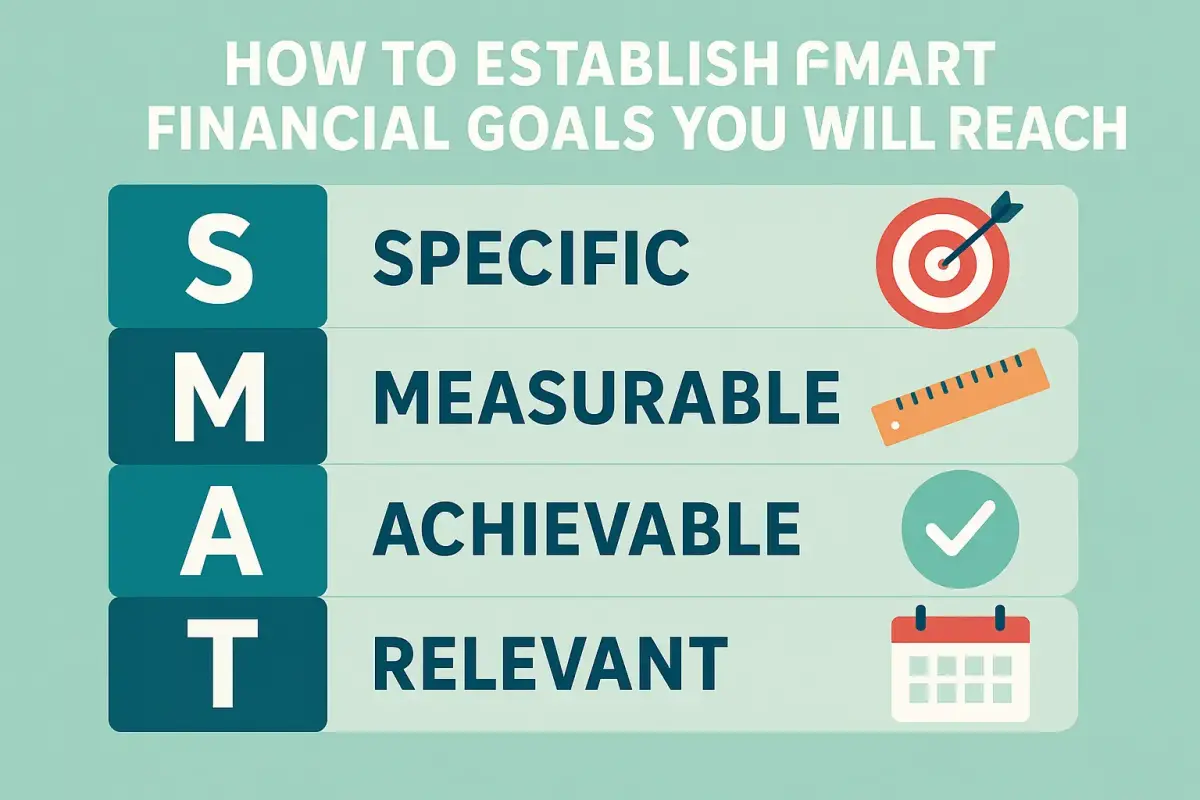Financial aspirations are a great place to start on your journey to financial freedom. But without a specific strategy, those ambitions can be little more than wishful thinking. That's where the SMART goal-setting approach comes into play – a straightforward process that translates nebulous financial wishes into tangible, achievable objectives. We're going to get into how you can use this approach to set and meet your financial goals.
What Are SMART Goals?
SMART is described as Specific, Measurable, Achievable, Relevant, and Time-bound. These criteria will make sure your goals are clear and achievable, guiding your progress and keeping you motivated.
- Specific: You have to define what your goal is. What specifically are you trying to accomplish?
- Actionable: Define what can be done to achieve the goal. How will you know when you have achieved your objective?
- Realistic: Make sure you can actually achieve your goal with your current resources and limitations.
- Related: Match the purpose of your resolution to broader life goals.
- Time Bound: Set a deadline to create a sense of urgency.
How Creating SMART Financial Goals Increases Your Chances of Success
What not to love about SMART goals? SMART goals give you clarity and help you focus; no vagueness and clear targets are set. Such a deliberate methodology not only inspires but also significantly improves the chances of success by turning daunting aspirations into manageable objectives.
How to Make SMART Financial Goals Step by Step
- Use the SMART Goals Plan to Identify Your Goal.
So, you might be thinking that you want to save for a vacation.- Specific: "I want to have $3,000 saved up for a Hawaii trip."
- Measurable: It's about numbers rather than words: "I will save $250 each month."
- Realistic: In other words, check your pocket!
- Context: "When AFP asked the tourist agency about the situation in Moalboal, they said, ‘This trip would take care of my travel and downtime needs.’"
- Time Bound: "I want to save the above amount in 12 months."
- Break Big Goals into Smaller Tasks
Big goals can be scary, but when you break them down into bite-sized pieces, they're easier to swallow. For example, if you want to pay off $12,000 in debt:- Divide it to $1,000 a month, or roughly $230 a week.
- Try to reduce extraneous expenses or seek additional income streams such as freelancing or a part-time job.
- Track and monitor progress to help keep you engaged.
Track your progress frequently with a financial journal or budgeting app. Celebrate small wins as you go to stay motivated. - Avoid Common Pitfalls
Don't set unrealistic goals or forget to be flexible. Life changes, be ready to change your goals too – don't forget about them and throw them away!
Regular Review and Revision of Goals
Regular check-ins can also help ensure that your goals are still appropriate, feasible and in line with your current circumstances, whether they're changed by your making more money, changing jobs or having an unexpected expense. You might need to tweak the time frames or the dollar amounts, but always keep your eye on the end-goal.
Conclusion
Having SMART financial goals gives you clarity and direction, so you are less likely to be swayed by temptations along the way. But you have to remember every little step is part of the larger picture and be game for the journey with stubbornness and flexibility. With this approach, you're not simply dreaming — you're planning with intention and giving yourself the best chance to succeed!


